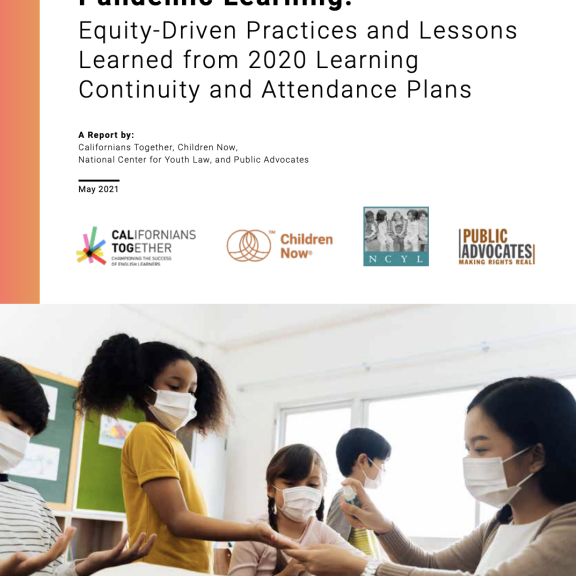How Districts Planned for Pandemic Learning: Equity-Driven Practices and Lessons Learned from 2020 Learning Continuity and Attendance Plans
For “students with unique needs” – students in foster care, students in the juvenile justice system, students experiencing homelessness, English learners, students in low-income families, students of color, and students with disabilities – challenging forms of instruction during the COVID-19 pandemic have compounded the typical barriers to graduation that they face, such as higher-than-average school mobility, lack of access to mental health and special education services, and discriminatory school climates.
In this report, 48 Learning Continuity Plans were analyzed to learn about promising and concerning practices and trends in Local Education Agency planning. The plans were reviewed for minimum legal compliance, to gain perspective on how comprehensive and innovative district planning was with respect to critical concerns of community stakeholders, and to find out how these Local Education Agencies were planning and investing funds to support all students and especially students with unique needs and students of color, who have been disproportionately impacted by the pandemic. This report includes our findings as well as 20 recommendations for how Local Education Agencies can plan more comprehensively for the needs of all students, particularly students with unique needs.



